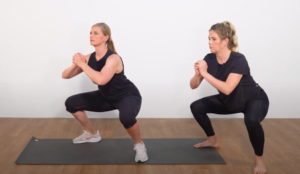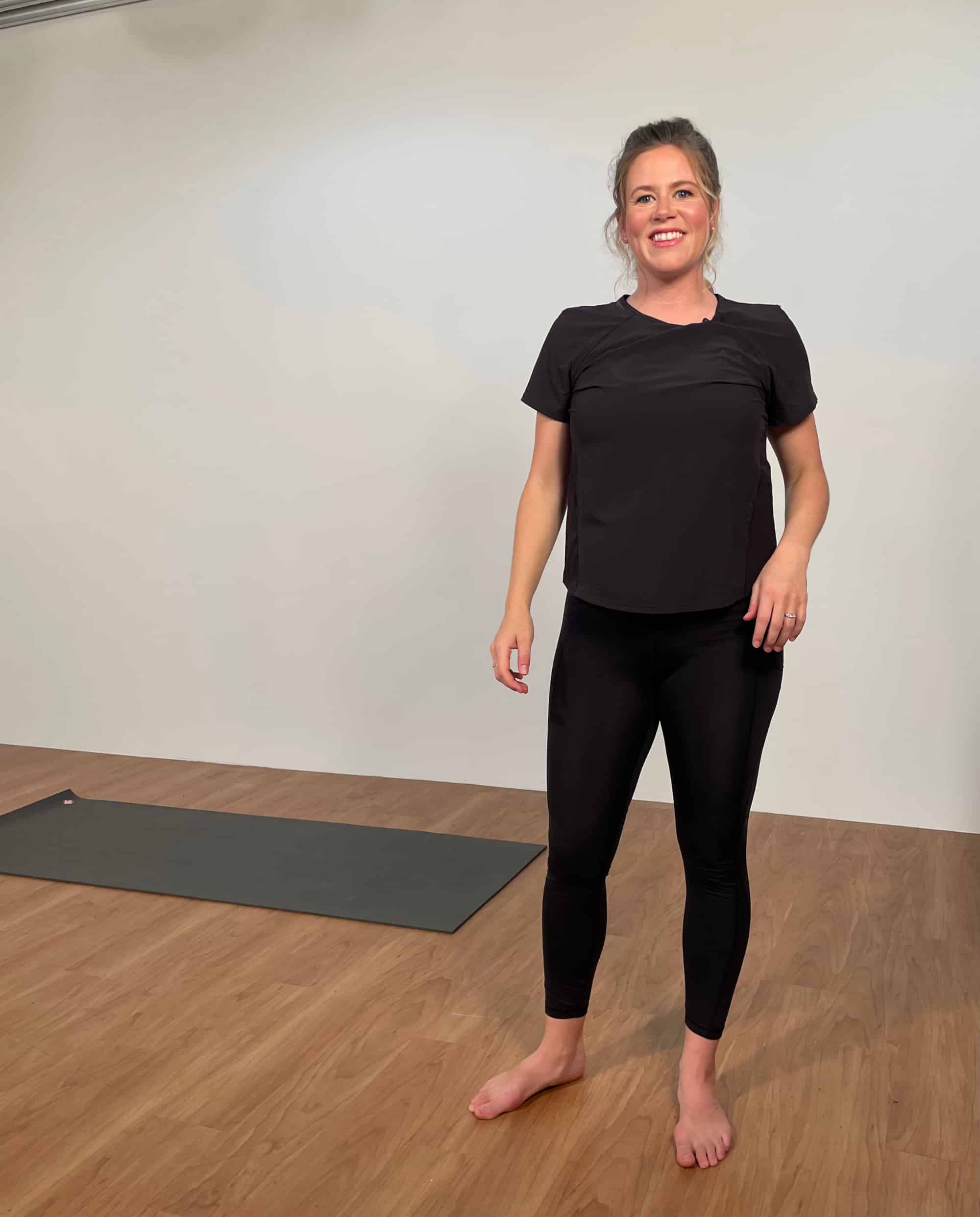High muscle tone is when a muscle is shorter than average and has a tight or rigid feel – think scrunched up and tight.
Low muscle tone is when a muscle is longer than average and has a floppy, flexible and sometimes mushy feel to it.
When tone of the pelvic floor is affected it can lead to pelvic floor dysfunction:
High tone can lead to: incontinence, pelvic pain, hip or low back pain, pain with intercourse, urinary retention, reoccurring UTI’s and more.
Low tone can lead to: incontinence, prolapse/pelvic heaviness or bulging, low back and hip pain and more.
Having high tone doesn’t mean you’re super strong, and having low tone doesn’t mean you’re super weak either. This is where the pelvic floor can get confusing and seem a bit complex, but just like every baby is different, so too is everyone’s body and pelvic floor and the way it works with the rest of our bodies. So I am going to try to simplify it for you in this post. I cover these topics in my online Pregnancy and Postpartum Recovery Courses as well so if you are keen to learn more, please check those out at Maternix.ca to read more about what is offered in those courses!
LOW TONE PELVIC FLOOR:
Let’s start with LOW TONE pelvic floor muscles. Typically (and this is not always the case), people who give birth vaginally can have issues with low tone postpartum. This is because you have spent time pushing and maybe bearing down on the pelvic floor, helping it to stretch open so that your baby’s head can come through. Likely there was at least some tearing of the tissue around the vagina and maybe you needed stitches. All of this causes some trauma to those tissues and this will take time to heal and build strength again. This can take anywhere from 6 months to a few years!!! I’m not joking, recovery can take years.
Low tone may feel like you have a hard time contracting your pelvic floor, you feel pressure when lifting, coughing, laughing. You can’t really connect to your pelvic floor at all, you feel weak through your core muscles, you find it hard to maintain “good” posture, you have a hard time holding your pee in, you feel pelvic heaviness especially at the end of the day or after physical activity or you feel bulging at the vagina. It can also feel like simply nothing is going on down there at all…
What you can do for LOW TONE:
What can you do if you feel like you are dealing with low tone of the pelvic floor? I will repeat myself when I say that building strength back in the pelvic floor – especially establishing more tone – takes TIME! sometimes… along time. But consistency pays off. Don’t be discouraged if you don’t notice an improvement in 6 weeks or a few months. It can take longer than that.
- Active relaxation and breathing techniques to connect to your core and pelvic floor
- Kegels (along with active relaxation)
- Vaginal weights (best to see a pelvic floor therapist to review this)
- Other devices (ie. Perifit – connects to an app on your phone)
- General strength training
- Exercise that respects your symptoms (ie. if you are doing an exercise that causes you to leak or feel pelvic heaviness – modify to avoid those symptoms)
- Minding your posture – try to avoid slumping into your hips – stand tall (you don’t need to puff out your chest, but avoid looking like you are melting into the floor)
- Seeing a pelvic floor therapist for personalized care
HIGH TONE PELVIC FLOOR:
HIGH TONE pelvic floor muscles: Usually, (again, not always the case) people who experience high tone are those who may have had a c-section, who carry a lot of stress physically, have had past trauma (emotional or physical – to the pelvic floor or not), who clench their jaw a lot, have anxiety, who find it hard to physically relax, who has an issue with incontinence or pelvic heaviness, tight and sore hips, glutes and/or low back.
Having high tone can make it hard to connect to the pelvic floor because you are in a state of tension so you must first relax the muscles before you can squeeze them again. For some, you may feel nervous about fully relaxing your pelvic floor due to heaviness, bulging or the feeling of needing to pee.
What you can do for HIGH TONE:
- Lay on your back and starting at your feet, tense every area of your body one part at a time, hold for 5 seconds and the let out a breath and relax – then apply this method to your pelvic floor muscles
- Spend time working on long slow inhales expanding your lower rib cage and relaxing your pelvic floor and soft long exhales keeping it relaxed
- Consciously tuning into where you hold tension throughout the day while doing various tasks and mindfully relax and let go. (If you need to wear a pad to allow yourself to do this with more confidence than wear a pad! You might surprise yourself that nothing actually comes out!)
- Stretching and relaxing (back, hips, legs… everywhere)
- Dilators (best to be seen and instructed by pelvic floor therapist to take this on) – these help to passively stretch your pelvic floor muscles gradually
- Generally strength training and exercise
- Seeing a pelvic floor therapist for personalized care
I hope that this post has been helpful and if you are looking to learn more, please check out my other blog posts as well as my instagram page @maternix.ca. I also have a 2-part Pregnancy Course & a 5-part Postpartum Recovery Course that allow you to learn WAY more about the body, recovery and the pelvic floor at a fraction of the price as seeing a therapist. My goal is to make pre and postnatal care more accessible and easier to digest and apply to your everyday.
Thank you so much for reading and if you have any questions, please DM me on instagram (@maternix.ca) or email me at info@maternix.ca.
Chat soon,
Tara Campbell





 Tara is a Physiotherapist specializing in women’s health and pelvic floor rehab. She is passionate about helping women understand the changes their bodies go through during pregnancy and how they can rehabilitate more effectively postpartum.
Tara is a Physiotherapist specializing in women’s health and pelvic floor rehab. She is passionate about helping women understand the changes their bodies go through during pregnancy and how they can rehabilitate more effectively postpartum.